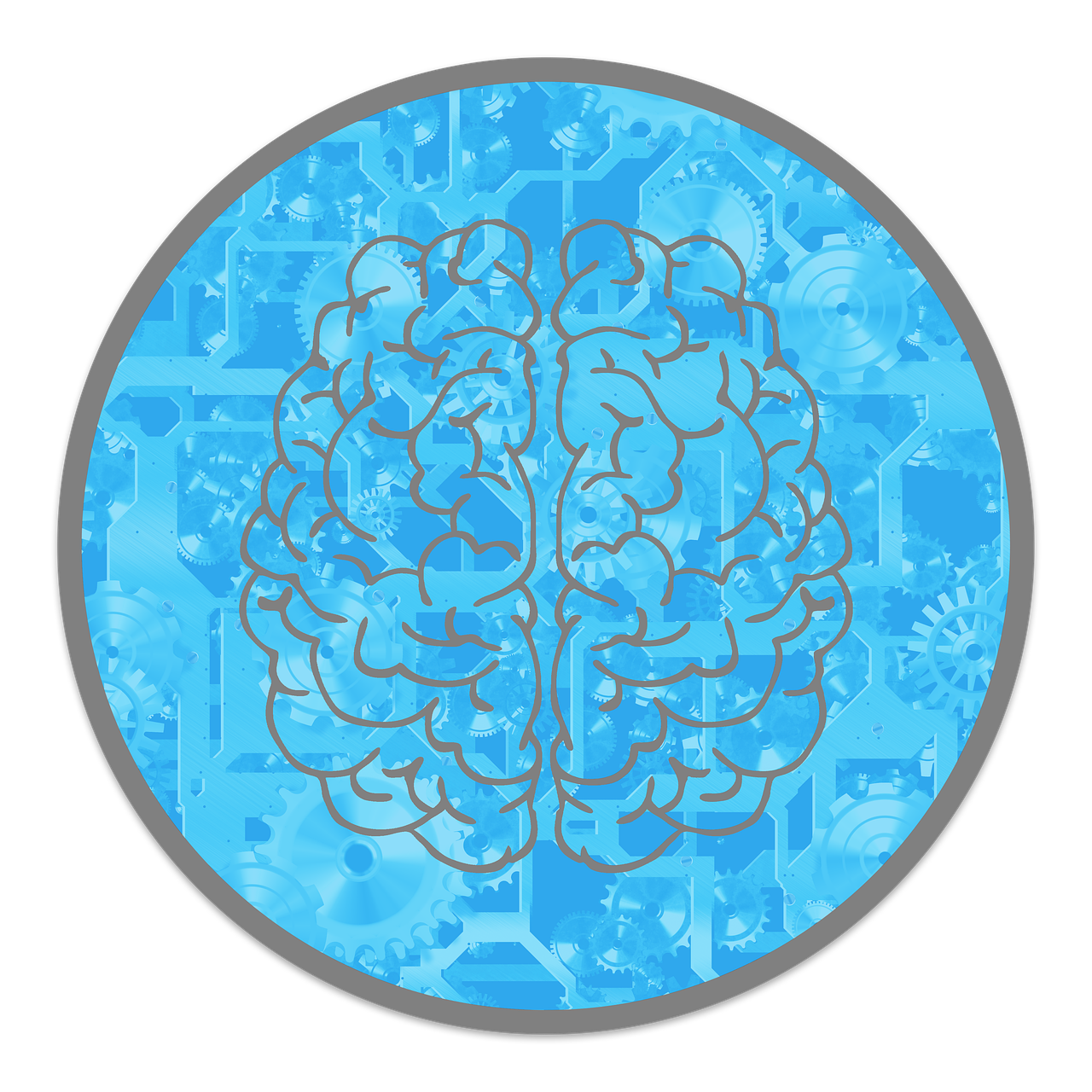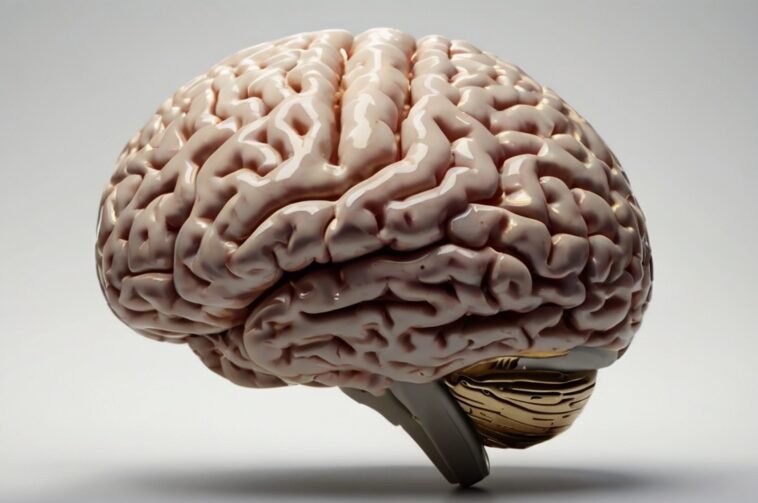
Is consciousness just the brain doing its thing—neurons firing in fancy patterns like a fireworks show on the Fourth of July?
Or is there something more going on?
Maybe something that even science can’t quite plug into yet?
Yeah, we’ve been asking this question since before Socrates started annoying people in the Agora.
Fast forward a couple thousand years, and neuroscience has made some serious moves.
We now know the brain isn’t just a lump of gray mush—it’s a hyper-connected, always-on network of about 86 billion neurons, all chatting away like it’s Black Friday at a call center.
We’ve got synchronized firing, neural oscillations, and networks like the default mode network that lights up when you’re doing absolutely nothing—aka your brain’s version of Netflix and chill.
But here’s the kicker: even with all this complexity, philosophers are still tapping us on the shoulder going, “Cool wiring, bro—but why does it feel like something to be you?”
That’s the puzzle.
Complexity may be part of the answer, but it doesn’t quite explain how raw electrical signals translate into love, fear, or that weird sense of nostalgia when you hear a song from high school.
Brain Complexity: More Than Neurons and Synapses
The human brain contains approximately 86 billion neurons, each connected to thousands of others via synapses.
This results in a network of such vast proportions that it’s often compared to the entire internet.
Key Elements of Brain Complexity
Neuronal connectivity
Ever heard of the connectome?
It’s like the brain’s version of Google Maps—except with trillions of routes and no clear traffic laws.
These neural pathways form a dense, tangled web where every shortcut might lead to a new insight… or a bad pun.
Hierarchical organization
From detecting light and sound to contemplating the meaning of life at 3 AM, your brain processes info on multiple levels.
It’s like starting with LEGO bricks and somehow ending up with the Death Star—twice.
Dynamic network activity
The brain’s not static.
Networks like the default mode, salience, and executive control are constantly shifting depending on whether you’re deep in a spreadsheet, daydreaming about pizza, or trying to remember if you locked the door.
Complexity alone does not guarantee consciousness. We must still explain how subjective experience arises.
David Chalmers, The Conscious Mind (1996)
- Read also: Unlocking the Mind: Is There a Limit to What the Brain Can Learn?
- Read also: The Neuroscience Behind Brain Complexity: An Overview

The Hard Problem of Consciousness
philosopher David Chalmers dropped the term “the hard problem of consciousness” back in the ’90s, and honestly, we’re still chewing on it like it’s philosophical beef jerky.
The problem?
It’s not about how the brain sees, hears, or reacts (we’re getting pretty good at those so-called “easy problems”).
It’s about why all that electrical activity in your head feels like something.
Like, sure—your brain processes light waves and turns them into an image. Great.
But why does seeing a sunset spark awe?
Or heartbreak feel like an emotional punch to the gut?
That’s qualia, baby—the raw, subjective feel of experience.
And no matter how many fMRI scans we run or neurons we map, we still can’t explain how that inner movie plays out.
Some Big, Brain-Bending Questions:
- Why does any of this neural activity feel like anything at all?
- Is consciousness just clever info processing with a flair for drama?
- Are our current models just scratching the surface of something deeper?
Philosophers are right to keep poking us—neuroscience is crushing it at explaining how the brain works, but when it comes to why it feels, we’re still staring into the existential abyss (and yeah, it’s asking if we’re in a simulation).
Panpsychism
panpsychism is that brainy theory suggesting everything might be a little bit conscious.
Yep, even that coffee mug on your desk might be vibing in its own quiet, proto-conscious way.
This idea’s been making the rounds thanks to philosophers like Galen Strawson and Philip Goff (shoutout to Galileo’s Error, 2019).
The core pitch?
Consciousness isn’t something the brain creates—it’s something the brain organizes.
Like a Wi-Fi router for experience, not the source of the signal.
Key Concepts
- All matter has some level of consciousness, even tiny particles—kind of like the Force, but with more footnotes.
- Your neurons don’t conjure experience out of nowhere—they might be syncing up what’s already there.
- If consciousness isn’t reducible to physical processes, maybe it is a fundamental property of the universe—right up there with mass and charge.
If experience is real and cannot be reduced, then it must be a fundamental building block of the universe.
— Philip Goff, Galileo’s Error (2019)
The big question, though: Can we test this? Or are we just wandering into metaphysical Inception territory?
For now, panpsychism feels less like a falsifiable theory and more like a compelling narrative twist in the consciousness saga.

Integrated Information Theory (IIT)
Imagine if consciousness had a scorecard.
That’s essentially what Giulio Tononi’s Integrated Information Theory (IIT) brings to the table—a bold attempt to quantify subjective experience using hard math.
Yep, we’re talking brain science meets Black Mirror.
The Basics:
- IIT says consciousness arises when information isn’t just present, but integrated across a system.
- Enter Φ (phi)—the MVP of IIT. It’s a numerical measure of how much info a system generates as a whole, beyond what its individual parts can do alone.
- The higher the Φ, the more “conscious” the system. So your brain? High Φ. Your laptop? Not so much. (Sorry, Siri.)
Philosophically, IIT flirts with physicalism and functionalism—meaning it’s trying to stay grounded in real-world biology and computation, not float off into metaphysics like panpsychism sometimes does.
The Catch? Even with all that elegant math, critics say IIT doesn’t really solve the “why does it feel like something to be me?” problem.
It tells us how consciousness might arise in theory—but not why certain integrated systems light up with experience while others don’t.
The explanatory gap is still very much a thing.
Emergence vs. Reductionism
In the world of consciousness studies, there’s an ongoing philosophical showdown that’s basically Avengers: Endgame for the brain—the clash between emergence and reductionism.
Team Reductionism
This camp, stacked with computational neuroscientists and hardcore materialists, argues that once we’ve mapped every neuron, decoded every synapse, and written enough equations, consciousness will be just another line item on the spreadsheet of biology.
Think of it as trying to explain Hamlet using only ASCII code—technically possible, but missing the point?
Team Emergence
Led by thinkers like Roger Sperry and John Searle, this crew believes consciousness emerges from brain complexity—like liquidity from H₂O molecules.
You can’t point to a single water molecule and say, “That’s wet!”—just like you can’t find consciousness in a single neuron.
It only makes sense when things get complex and start vibing together.
The Real Twist?
Emergence looks cool, but it’s not causation.
Just because consciousness shows up when brains get complicated doesn’t mean it comes from that complexity.
It’s like assuming fireflies blinking together cause the moon to rise—correlation ain’t causation, folks.

Artificial Intelligence and Consciousness
As artificial intelligence keeps flexing its neural net muscles—writing poetry, passing exams, and kinda flirting back—the age-old question gets a 21st-century twist: Can machines actually become conscious?
The Optimist’s Take
If consciousness is just high-level information processing, then hey, why not?
Build an AI with enough complexity—especially one mimicking human neural networks—and theoretically, it could have a first-person perspective.
If your brain’s just fancy meat doing computations, who’s to say silicone can’t join the party?
The Skeptics
Hold up. Just because you can simulate a hurricane doesn’t mean you’re gonna get wet.
Likewise, modeling consciousness doesn’t mean the lights are actually on inside that machine.
No qualia, no intentionality, no “what it’s like to be” anything—just clever mimicry.
The Underlying Philosophy Brawl
This all boils down to a philosophical cage match between functionalism (consciousness depends on what a system does) and biological naturalism (consciousness needs flesh and blood—or at least biology).
It’s basically The Matrix vs Black Mirror—either reality’s just code, or there’s something irreplaceably organic going on.
Quantum Consciousness
Physicist Roger Penrose and anesthesiologist Stuart Hameroff teamed up for Orchestrated Objective Reduction (Orch-OR)—basically the Inception of neuroscience theories.
They propose that consciousness doesn’t just emerge from classical brain activity, but from quantum computations happening inside microtubules (tiny structures within neurons).
Yes, your consciousness might be surfing the quantum foam.
Their idea? Classical explanations can’t account for the weird unity and “non-local” qualities of conscious experience—you know, how everything somehow feels stitched together, even when your brain’s juggling a dozen things at once.
Critics:
Mainstream neuroscience isn’t quite buying it.
The big knock? There’s little empirical evidence, and maintaining quantum coherence in the warm, wet chaos of the brain seems about as likely as Schrödinger’s cat filing taxes.
Still, Orch-OR fans argue it’s at least trying to bridge the gap between physical processes and subjective experience—something classical models often dodge.

- Read also: Brain Complexity and Mental Health: Exploring the Connection
- Read also: A Deep Dive: The Impact of Brain Complexity on Learning and Memory
Bridging the Gap: Where Philosophy Meets Neuroscience
If you’ve ever felt like explaining consciousness is like trying to solve a Rubik’s cube in the dark—while it’s spinning—you’re not alone.
The truth is, neither philosophy nor neuroscience can crack the code solo. It’s gonna take a tag team.
Integrated Approaches:
- Neurophenomenology: Championed by Francisco Varela, this approach says, “Hey, let’s actually ask people what their inner experience feels like and then see what the brain’s doing at the same time.” Mind-blowing, right?
- Philosophy of cognitive science: These are the folks asking the big meta-questions. Like, are AI models really thinking, or just glorified autocomplete engines?
- Embodied cognition: This view suggests that our awareness is shaped by our whole body and how it moves through the world—basically, it’s the anti-Matrix.
Conclusion: The Mystery Remains
Even with brain scanners sharper than Tony Stark’s suits and philosophical arguments deep enough to make The Matrix look like light reading, the mystery of consciousness remains unsolved.
Sure, the brain’s wiring is insanely complex—86 billion neurons doing the neural cha-cha in synchronized chaos—but just complexity alone doesn’t explain why it feels like something to be you.
But one thing’s for sure: cracking the consciousness code won’t come from staying in one lane.
We’ll need all hands on deck—neuroscientists, philosophers, physicists, and probably a poet or two—to unravel what might just be the final frontier of the mind.



